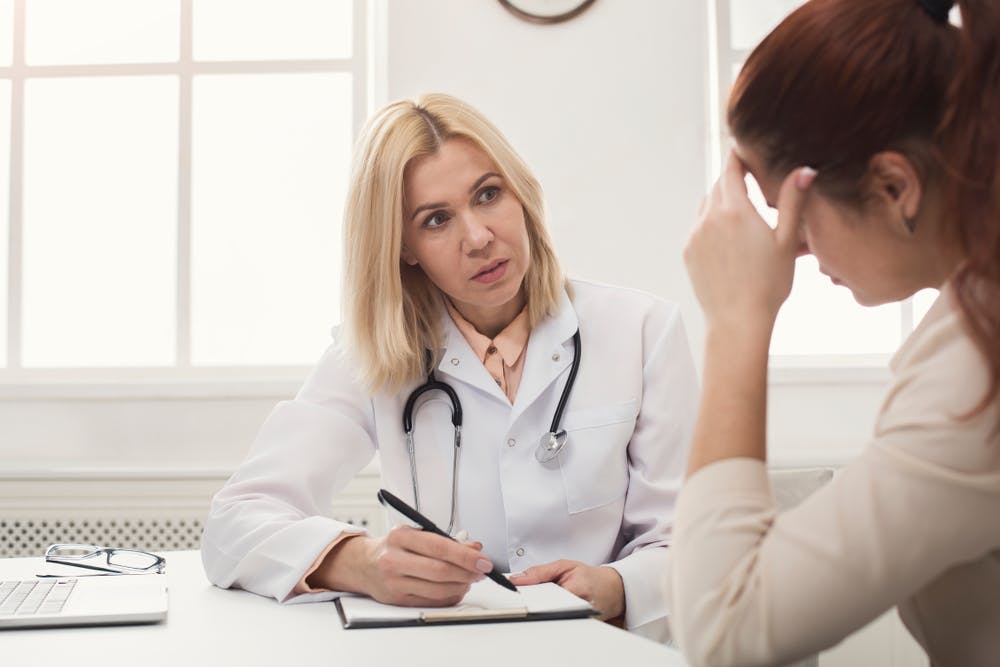The American College of Obstetricians and Gynecologists (ACOG) and the American Society for Colposcopy and Cervical Pathology (ASCCP) jointly define vulvodynia as vulvar pain that persists for at least three months without an identifiable cause.
Research links vulvodynia and depression, raising questions about the origins of this confounding condition. Patients may question whether anxiety can cause vulvodynia—or whether the reverse is true. Fortunately, clinicians can offer welcome clarity about the current state of evidence on this disorder and its relationship with mental health.
Understanding Vulvodynia
Vulvodynia appears in 8 to 10 percent of women of all ages, reports Nature Reviews Disease Primers. Yet it is rarely diagnosed, observes a population-based study published in the American Journal of Obstetrics and Gynecology. Of the 48.6 percent of study participants who met the criteria for vulvodynia, just 1.4 percent had been properly diagnosed.
Diagnosing vulvodynia centers on first excluding other treatable causes, advise ACOG and ASCCP. Initial steps include taking a thorough medical, surgical, and sexual history and asking specific questions about symptoms, such as the duration of pain. The history is then followed by careful physical examination of the vagina and vulva, with testing to rule out infection as warranted.
Because patients with chronic vulvar pain may express anxiety about pelvic examinations, gently explaining the exam steps and their purpose may lessen their understandable concerns. The physical exam may include cotton swab testing to pinpoint and classify painful areas on a scale of mild, moderate, and severe. To rule out referred pain from the back, hips, and other areas as a possible source, clinicians may wish to perform a thorough musculoskeletal evaluation. Probing for signs of pelvic floor weakness or spasms may also prove beneficial in eliminating possible physical origins of pain.
Can Anxiety Cause Vulvodynia?
Recent research illuminates the interplay between vulvodynia and mental health issues. An epidemiological study published in the Journal of Women's Health notes a history of diagnosed depression and anxiety disorders among study participants who were later diagnosed with adult-onset vulvodynia.
Similarly, study subjects with vulvodynia reported experiencing depressive symptoms before the start of their chronic vulvar pain, further suggesting depression may precede the condition, adds a nested controlled study in the American Journal of Obstetrics and Gynecology.
Among patients diagnosed with vulvodynia, a 7-year longitudinal study published in 2019 in The Journal of Sexual Medicine finds specific factors, such as anxiety, may influence the duration of pain. Notably, the 71.1 percent of women who reported less pain over time also reported less anxiety, were older when they first began experiencing pain and did not have pain located at the vaginal opening.
Examining the Role of Inflammation
The precise ties between vulvodynia and mental health are the subject of ongoing investigation, with inflammation as one area of inquiry. Notably, a review and meta-analysis of 30 experimental studies published in Brain, Behavior, and Immunity confirms that acute psychological stress can provoke a biological reaction of inflammation.
Research from Perspectives in Psychiatric Care further adds that exposure to trauma may trigger disregulation of the hypothalamic-pituitary-adrenal axis, which regulates the body's cortisol levels. This cascade of events may, in turn, trigger inflammation.
The inflammatory response, as noted in community-based inquiries, has been associated with depression. Further investigations may reveal more about this enigmatic condition and inform shared decision-making to improve patient well-being.
Personalizing Treatment for Vulvodynia and Depression
Recent guidance from ACOG advises clinicians to take an individualized, multidisciplinary approach to treating vulvodynia. A team that includes clinical psychologists, physical therapists and other specialists may more effectively address the complex physical and emotional aspects of this condition. Although the optimal treatment path remains unclear, initial medical therapy may include topical or oral pain medications, pudendal nerve blocks or botulinum toxin, ACOG notes.
Even with treatment, a patient's pain may take weeks to months to lessen, and it may never completely go away. Conversely, research from The Journal of Sexual Medicine reports that pain may wane over time even without treatment. Thus, any treatment approach should start with a careful discussion of the diagnosis and realistic treatment goals.
Psychological approaches may include cognitive behavioral therapy, which a small randomized controlled trial in the journal Pain finds produces a more significant reduction in vulvar pain symptoms than supportive psychotherapy. In cases where behavioral and medical treatments prove ineffective against generalized vulvar burning, referral to a pain specialist may prove helpful to your patient.
Although it may be unrealistic to expect a complete resolution of vulvodynia symptoms, by engaging thoughtfully with each patient, clinicians may offer a path forward to address the mental health and physiologic components of the condition.




